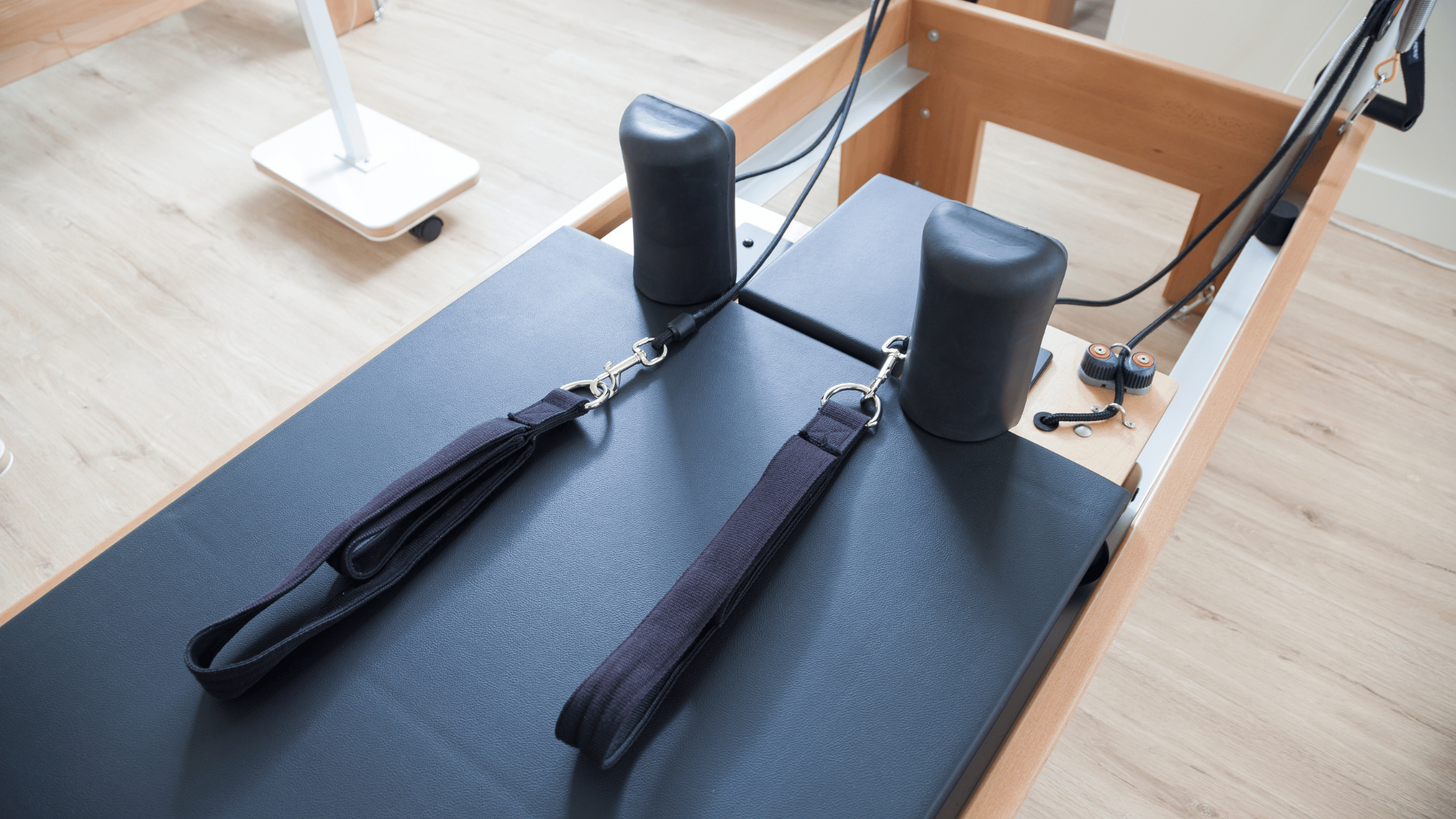The Importance of Pilates for Scoliosis: Symptom Relief and Promoting Alignment

Licensed Physical Therapist, PT, DPT // Lead EW Yoga Instructor // EW Pilates Instructor // EW Motion Therapy Homewood
Scoliosis, a condition characterized by an abnormal curvature of the spine, affects millions worldwide. While it can be a source of discomfort and reduced mobility, there's growing evidence that Pilates, a low-impact exercise regimen, can significantly benefit those struggling with this condition. In this article, we'll explore how Pilates can help relieve the symptoms of scoliosis and promote better spinal alignment, enabling sufferers to lead a more comfortable and active lifestyle.
Understanding scoliosis and its impact
Before delving into the specifics of Pilates, it's crucial to understand what scoliosis entails and how it affects the body. Scoliosis is a medical condition characterized by an abnormal lateral curvature of the spine that can appear in either a 'C' or 'S' shape and vary in severity from mild to severe. The condition not only impacts the physical appearance of the spine but can also lead to complications such as reduced range of motion, pain, and difficulties with breathing, especially in more severe cases where the rib cage may press against the lungs and heart. Scoliosis can develop in any part of the spine but is most common in the chest area (thoracic scoliosis) or the lower section of the back (lumbar scoliosis). Its onset can occur at any age, but it is most frequently diagnosed in children and adolescents during growth spurts just before puberty.
Scoliosis is typically classified into two main types: structural and nonstructural (or functional). Structural scoliosis involves a fixed curve of the spine that cannot be corrected simply by changing posture. This type is further categorized based on its cause into idiopathic (no known cause, accounting for about 80% of cases), congenital (present at birth due to bone anomalies), and neuromuscular (resulting from nerve or muscle diseases). On the other hand, nonstructural (functional) scoliosis is characterized by a spine that appears curved but can return to normal if the underlying condition (such as a difference in leg length or muscle spasms) is addressed.
The role of Pilates in managing scoliosis
Pilates: an overview
Pilates, developed by Joseph Pilates in the early 20th century, is a method of exercise that emphasizes body alignment, core strength, and mindful movement. Its focus on controlled, low-impact movements makes it an excellent choice for individuals with scoliosis, who often need gentle yet effective strengthening and stretching exercises.
Promoting spinal alignment and flexibility
Pilates exercises can be particularly beneficial for individuals with scoliosis as they emphasize precise movements and the spine's alignment. By strengthening the muscles around the spine, Pilates helps evenly distribute the muscular workload on both sides of the body, which can assist in correcting imbalances caused by scoliosis. Moreover, the flexibility component of Pilates enhances the range of motion, making the spine more pliable and less prone to stiffness and pain. Through regular Pilates practice, individuals can experience improvements in posture and a reduction in the discomfort associated with scoliosis.
When considering Pilates for scoliosis, it's important to distinguish between structural and non-structural (functional) approaches. For those with structural scoliosis, Pilates exercises are tailored to address the specific curvature of the spine, focusing on strengthening and elongating the spine in a balanced manner. These exercises stabilize the curved areas while improving overall posture and spinal alignment. On the other hand, Pilates for non-structural scoliosis targets the underlying conditions that cause the apparent spinal curvature, such as muscle imbalances or differences in leg length. In this case, Pilates exercises are designed to correct these imbalances, potentially alleviating the spinal curvature.
Relief from symptoms and improved quality of life
Alleviating pain and discomfort
Pilates offers a targeted approach to alleviating pain and discomfort for individuals with scoliosis, focusing on core strength, flexibility, and improved posture. The method's emphasis on strengthening the core muscles, including the abdominals, back, and pelvic muscles, supports the spine more effectively, reducing strain and imbalance. This foundational support not only helps in stabilizing the spine but also mitigates the discomfort associated with scoliosis. Furthermore, Pilates enhances spinal flexibility, easing muscle tension around the spine and reducing stiffness in areas most affected by the curvature. The practice's mindful movements promote body awareness, enabling those with scoliosis to adjust their posture in daily activities, thereby decreasing pain and discomfort.
Stress relief and mental benefits
Incorporating breath control, Pilates also addresses the mental and emotional aspects of living with scoliosis. Proper breathing techniques can relax tight muscles and foster a sense of calm, offering relief from chronic discomfort. By working with a qualified instructor experienced in adapting exercises for scoliosis, individuals can engage in a Pilates routine that is safe and effective and precisely tailored to alleviate their pain. This holistic approach not only improves physical well-being by addressing the structural needs of those with scoliosis but also enhances overall quality of life through stress reduction and increased body awareness.
Enhancing mobility and activity levels
Pilates can also boost mobility and encourage a more active lifestyle by improving spinal alignment and muscle strength. Many individuals with scoliosis experience limitations in their physical activities due to pain or fear of worsening their condition. However, Pilates can help break this cycle by safely increasing strength and flexibility, allowing for greater ease in everyday movements and the ability to engage in more varied physical activities.
Increased activity levels can improve overall health, including cardiovascular fitness, stronger bones, and enhanced mental well-being. For individuals with scoliosis, this can mean a significant boost in quality of life, with the ability to participate more fully in hobbies, sports, and social activities.
Implementing Pilates into your scoliosis management plan
Integrating Pilates into your scoliosis management strategy requires thoughtful consideration and should ideally complement existing treatments such as physical therapy. Here's how you can effectively incorporate Pilates into your comprehensive care plan, ensuring it works harmoniously with other treatment options.
Collaboration with healthcare professionals
Before starting Pilates, consult with your healthcare provider, especially if you're undergoing physical therapy or other scoliosis treatments. A multidisciplinary approach ensures your Pilates regimen supports and enhances your overall treatment plan. Healthcare professionals can help identify specific focus areas, such as strengthening weak muscles or increasing spinal flexibility, which can be addressed through tailored Pilates exercises.
Physical therapists can collaborate with Pilates instructors to develop a program considering your unique needs and goals. This partnership ensures that your Pilates routine is safe and complements the therapeutic exercises and strategies you're already using.
Personalized Pilates program
A personalized Pilates program is crucial for individuals with scoliosis. Work with a Pilates instructor with experience or specialized training in scoliosis and spinal conditions. They can design a routine that targets your specific curvature patterns, muscle imbalances, and pain points.
Your program should start slowly, focusing on mastering the correct form and understanding how each movement affects your body and your specific alignment needs. Over time, as your strength and flexibility improve, the intensity and complexity of the exercises can be gradually increased.
Integration with physical therapy
Pilates can be a valuable adjunct to traditional physical therapy. While physical therapy may focus on reducing pain, improving mobility, and correcting postural imbalances through various techniques, Pilates can further these goals by enhancing core strength, body awareness, and overall alignment.
Discuss with your physical therapist how Pilates can be integrated into your treatment schedule. Balancing the two is essential so your body can recover and adapt to the exercises without overexertion. Sometimes, your physical therapist may recommend Pilates exercises as part of your home exercise program.
Monitoring progress and adjustments
Regularly monitoring your scoliosis and overall physical condition is essential when implementing Pilates into your management plan. Track any changes in your symptoms, flexibility, strength, and posture. Share these observations with your healthcare providers and Pilates instructor. They may need to adjust your program based on your progress and any new symptoms or challenges.
It's also important to be patient and realistic with your expectations. Progress with scoliosis can be slow and incremental. Celebrate the small victories, such as an increase in mobility, a reduction in pain, or an improvement in your ability to perform daily activities.
Complementing other treatment options
In addition to Pilates and physical therapy, your scoliosis management plan may include other treatments, such as bracing or surgery in more severe cases. Pilates can still play a role in these scenarios, whether by strengthening the body pre-surgery, aiding post-surgery recovery, or working alongside a brace to ensure the surrounding muscles remain strong and active.
Remember, the goal of incorporating Pilates into your treatment plan is to support your overall health and well-being. It should not replace any prescribed medical treatments but rather serve as a complementary approach to help manage symptoms and improve quality of life. By working closely with healthcare professionals and a qualified Pilates instructor, you can develop a personalized program that addresses your specific needs and supports your overall treatment strategy. With the right approach, Pilates can be a valuable tool in your journey toward better spinal health and a more active, pain-free life.
If you're struggling with scoliosis, consider exploring Pilates as part of your holistic approach to managing the condition. Remember, an informed choice is the best choice, and understanding the benefits of Pilates for scoliosis can be the first step toward a more comfortable and active life. Physical therapy can be another essential part of a scoliosis treatment plan. To learn more about physical therapy, click the button below to review our answers to 20 frequently asked questions.


